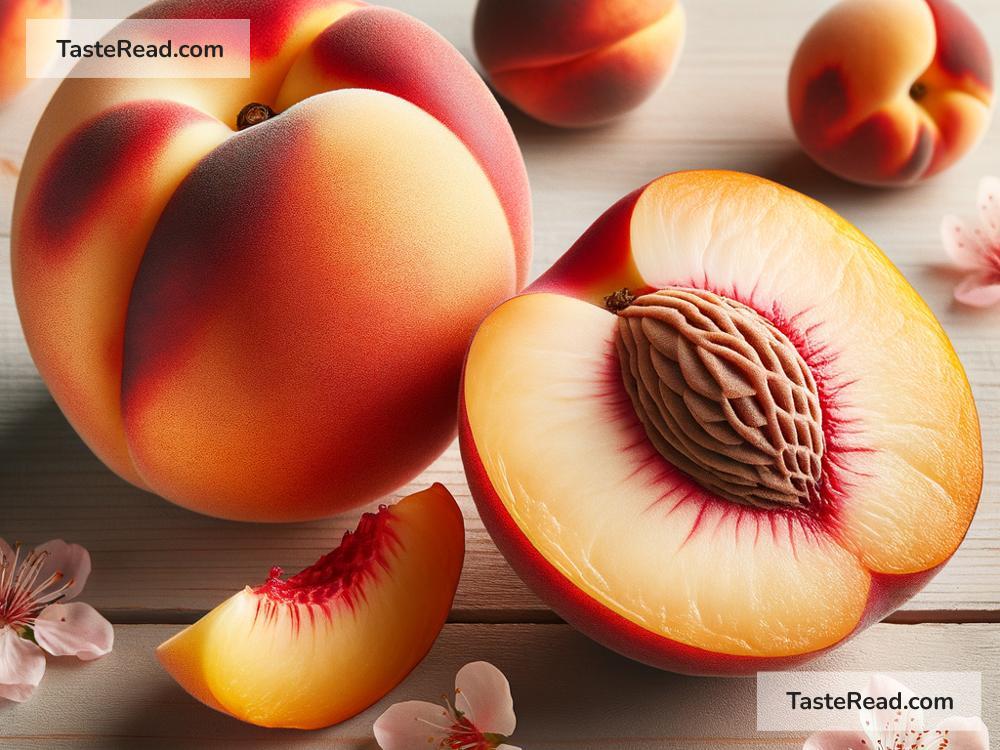The Curious Story of Nectarines and Their Relation to Peaches
Have you ever wondered what the difference is between peaches and nectarines? They look so similar on the inside, taste alike, and even grow on the same kind of tree—but their skins are completely different! Peaches have a fuzzy, soft texture on the outside, while nectarines are smooth and shiny. Despite their differences, these two fruits are actually very closely related. In fact, nectarines are just a special kind of peach! The story of nectarines and their mysterious relationship to peaches is full of fascinating facts that will make you appreciate these delicious summer fruits even more.
What Is a Nectarine?
Let’s start with answering the basic question: what is a nectarine? Botanically speaking, nectarines are peaches without the fuzz. That’s right—the big difference comes down to one single trait: their skin. Both fruits grow on trees belonging to the Prunus persica species, and they have nearly identical genetics. The smooth skin of nectarines is caused by a natural genetic mutation that affects the outer layer of the fruit.
This genetic twist means that nectarines are just a peach variety that happens to have smoother skin. So, you could say nectarines are peaches in disguise! But it doesn’t stop there. Not only can nectarines grow naturally on the same peach tree, but they can also switch roles—sometimes a peach tree will spontaneously produce nectarines, and sometimes a nectarine tree will produce peaches. Isn’t that wild?
The Role of Genetics
The secret behind the fuzz or smoothness is all in the genes. Scientists discovered that nectarines lack a single dominant gene responsible for peach fuzz. Peaches have this gene, which gives them their characteristic velvety skin. When this gene is missing or inactive, the peach turns into a nectarine with shiny, smooth skin.
Interestingly, peaches and nectarines can share the same tree because they are genetically compatible. A farmer could plant seeds from the same tree and end up with a mix of peaches and nectarines. This genetic quirk creates opportunities for nature to surprise us—one year the tree grows fuzzy peaches, and the next year it produces smooth nectarines!
Differences in Taste and Texture
While nectarines and peaches taste similar, some subtle differences set them apart. Nectarines often have a more intense flavor that’s sweeter and slightly tangy. Their flesh is firmer and less juicy compared to peaches, which are sometimes soft and messy to eat. This firmer texture makes nectarines a favorite for baking, grilling, and using in recipes where too much juice might cause issues—like pies, tarts, or salads.
The next time you bite into a nectarine, see if you can notice the stronger flavor. On the other hand, peaches are often prized for their soft, sweet taste and are perfect for eating fresh or blending into smoothies. Whether you choose a peach or nectarine, you’re in for a treat!
Nectarines Through History
Nectarines have been around for thousands of years, just like peaches. In fact, they were first mentioned in Chinese manuscripts going as far back as 2,000 years ago. Both fruits originated in China and later spread across the globe via trade routes. The ancient Romans and Greeks also loved peaches and nectarines and considered them luxury fruits.
The word “nectarine” comes from “nectar,” which refers to the sweet drink of the gods in Greek mythology. It’s no surprise that nectarines got this name—they were seen as especially sweet and divine. By the 16th century, nectarines became common in Europe, and farmers began cultivating them alongside peaches.
Today, nectarines and peaches are grown in many parts of the world, including the United States, Spain, Italy, and China. California is one of the largest producers of both fruits, and during the summer months, you’ll find them everywhere—from farmers’ markets to grocery stores.
How to Enjoy Nectarines and Peaches
The versatility of these fruits makes them a favorite among food lovers. You can eat them fresh as a snack or use them in countless recipes. Slice them into yogurt or oatmeal, bake them into cobblers and pies, or blend them into smoothies. If you’re feeling adventurous, try grilling nectarine halves with a drizzle of honey and a sprinkle of cinnamon—it’s a delicious summer treat!
Both fruits are also packed with nutrients. They’re rich in vitamins A and C, antioxidants, and dietary fiber, making them a healthy addition to your diet. Whether you prefer peaches or nectarines, you’ll get a boost of sweetness and health benefits in every bite.
Fun Fact
Did you know that peaches and nectarines can be classified as clingstone or freestone? Clingstone fruits have flesh that sticks to the pit (or “stone”), while freestone fruits have flesh that separates easily from the pit. Both peaches and nectarines can fall into these two categories, making them even more alike!
Conclusion
The curious connection between nectarines and peaches reminds us how nature can surprise us with its subtle complexities. Although they may seem like completely different fruits at first glance, they’re really siblings, sharing almost all of the same traits apart from their skin.
So, the next time you see nectarines and peaches at the store, take a moment to appreciate their fascinating relationship. Whether you choose the fuzzy peach or the smooth nectarine, you’re savoring the delicious result of nature’s genetic creativity. Grab a basket, enjoy the sweet taste, and let yourself marvel at their story!


